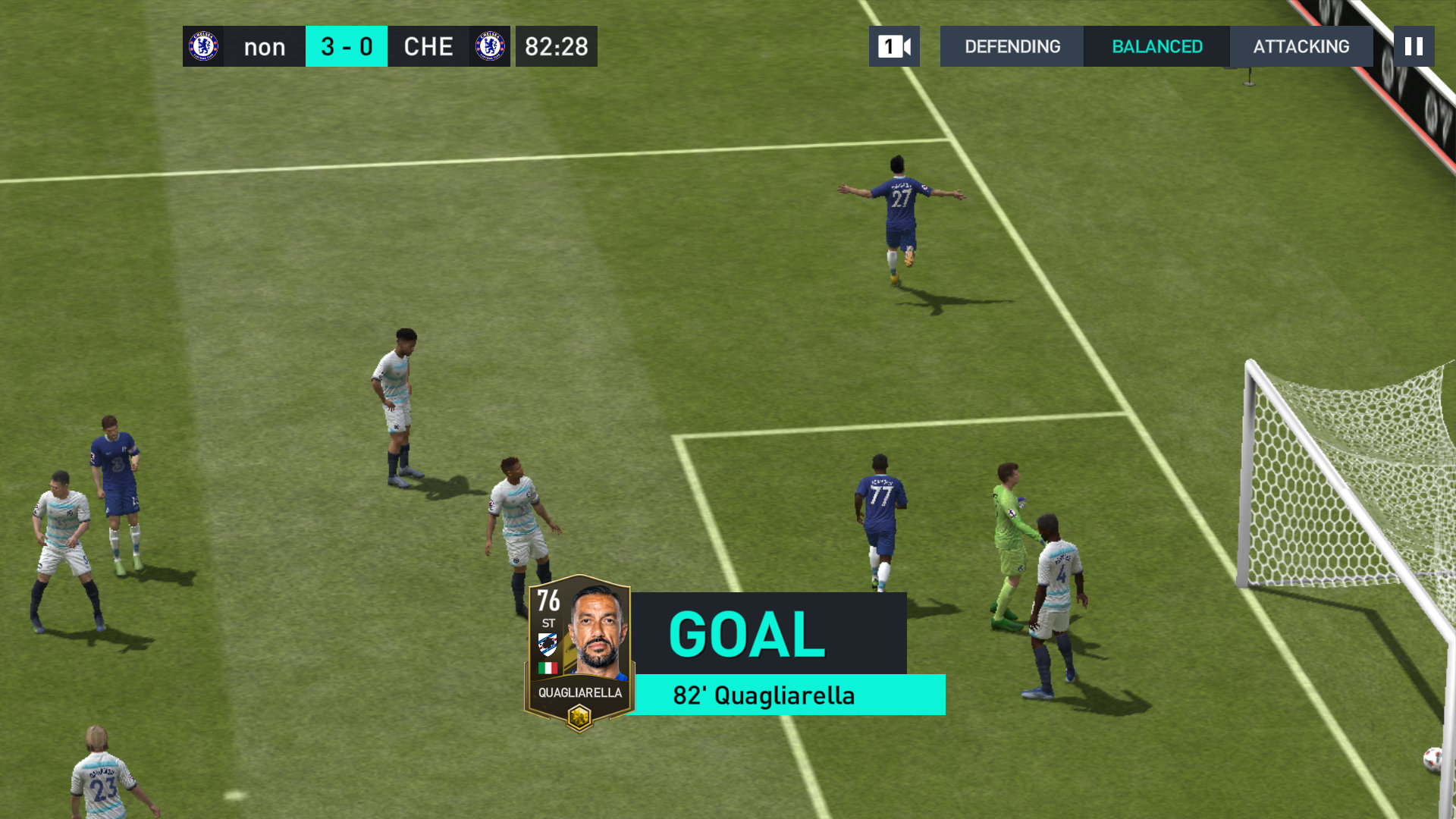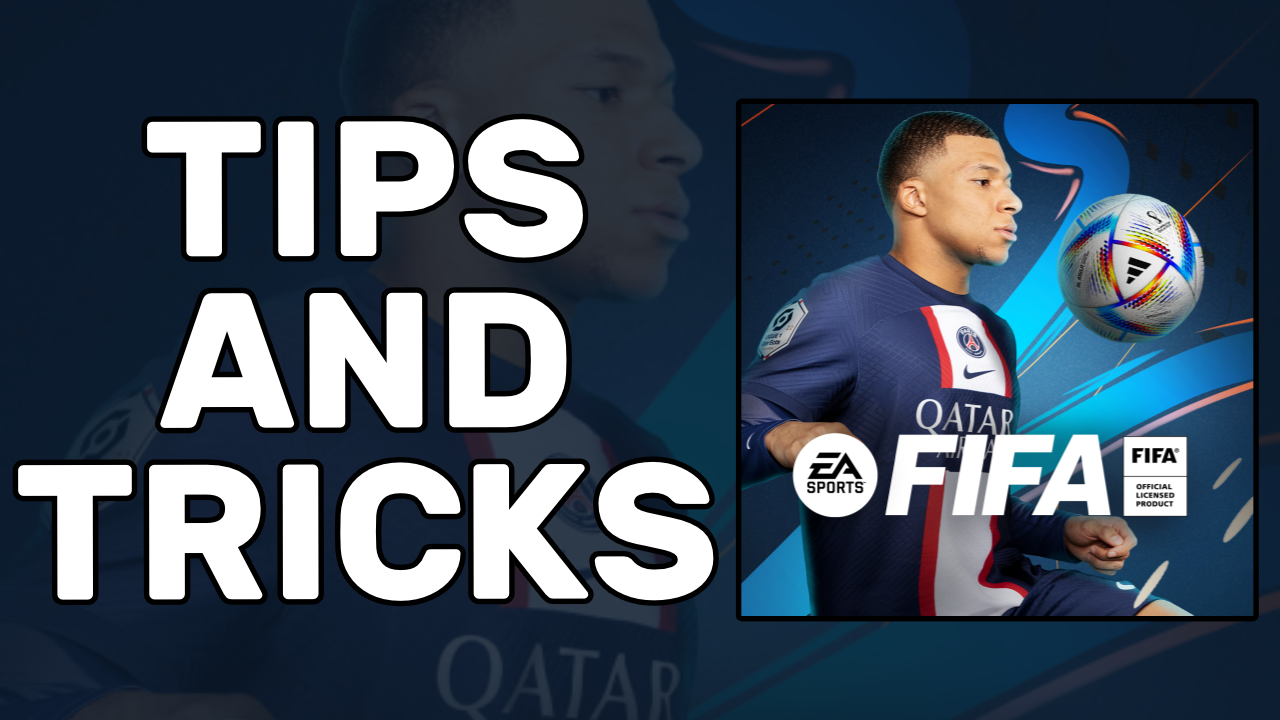Mastering the Pitch: General Tips and Tricks for FIFA Soccer
In the world of sports video games, FIFA Soccer stands as a titan. With its realistic gameplay, stunning graphics, and immersive football experience, it has captured the hearts of millions of gamers worldwide. Whether you’re a seasoned veteran who has experienced every iteration of the game or a newcomer just stepping onto the virtual pitch for the first time, there’s always something new to learn and master in FIFA Soccer.
This game is not just about scoring goals; it’s about strategy, finesse, and understanding the intricate mechanics that make up the beautiful game of football. It’s about the thrill of guiding your team to victory, the satisfaction of a well-executed play, and the constant pursuit of improvement.
In this blog post, we aim to help you elevate your gameplay. We will delve into general tips and tricks that span across various aspects of FIFA Soccer, from mastering the basics to implementing advanced strategies. These tips will not only help you gain a competitive edge over your opponents but also enhance your overall gaming experience.
So, whether you’re struggling to keep possession, finding it hard to break through your opponent’s defense, or simply looking to add more depth to your gameplay, we’ve got you covered. Let’s embark on this journey to dominate the pitch in FIFA Soccer together.
1. Understand the Basics
Before you can execute complex strategies and skill moves, it’s crucial to have a firm grasp of the basics in FIFA Soccer. These foundational skills form the building blocks of your gameplay and will greatly influence your performance on the pitch. Here’s how you can master the basics:
- Familiarize Yourself with the Controls: The first step to mastering FIFA Soccer is to get comfortable with the controls. Spend time in the practice arena or play a few friendly matches to understand how to pass, shoot, cross, sprint, and perform skill moves. Remember, the more comfortable you are with the controls, the more effectively you can respond to in-game situations.
- Master Player Movements: Understanding how to control your players’ movements is key to maintaining possession and creating attacking opportunities. Practice moving with the ball, changing direction quickly, and using the sprint function effectively.
- Learn Different Types of Passes: FIFA Soccer offers a variety of passes, including ground passes, lob passes, through balls, and driven passes. Each type of pass has its own benefits and is effective in different situations. Spend time practicing these passes to understand when and how to use them.
- Practice Shooting Techniques: Scoring goals is a crucial part of FIFA Soccer, and there are several different shooting techniques to master. From power shots and finesse shots to chip shots and headers, each technique requires different timing and positioning. Practice these techniques to become a more versatile attacker.
- Understand Player Positions: Each player position in FIFA Soccer has a specific role and responsibilities. Understanding these roles can help you make better decisions on the pitch. For example, defenders are responsible for blocking the opposition’s attacks, midfielders control the flow of the game, and attackers aim to score goals.
- Learn the Rules of the Game: While FIFA Soccer is a video game, it closely follows the rules of real-world football. Understanding offside rules, fouls, and the different types of cards can help you avoid penalties and make the most of your gameplay.
By mastering these basics, you’ll have a solid foundation to build upon. Remember, even the most skilled FIFA Soccer players continuously practice these basic skills to keep their gameplay sharp. So, don’t rush through this stage – take your time to understand and master the basics.

2. Master the Defense
In FIFA Soccer, a solid defense can be the foundation of your success. It’s not just about preventing the opponent from scoring, but also about regaining possession and initiating your own attacks. Here’s how you can improve your defensive skills:
- Learn to Jockey: Jockeying allows you to move your player in a defensive stance, making it harder for attackers to get past. It’s a crucial skill to master as it gives you greater control over your player’s movements and allows you to maintain a better defensive position. To jockey, hold down the L2/LT button (depending on your console) and use the left stick to move your player.
- Contain Your Opponents: Containing is another defensive technique that can help you keep your opponents at bay. When you contain, your player will automatically maintain a safe distance from the attacker, preventing them from easily getting past. Use the X/A button (depending on your console) to contain.
- Switch Players Effectively: Knowing when and how to switch players can significantly improve your defense. Use the right stick to switch to the player closest to the ball. Try to anticipate your opponent’s moves and switch players accordingly to intercept passes or block shots.
- Use Sliding Tackles Sparingly: While a well-timed sliding tackle can dispossess an opponent, a mistimed one can lead to fouls or even penalties. Use sliding tackles sparingly and only when you’re confident of winning the ball.
- Understand Your Players: Each player has different defensive attributes. Some players are faster, some are stronger, and some have better tackling skills. Understanding your players’ strengths and weaknesses can help you position them effectively and make better defensive decisions.
- Practice Defensive Scenarios: Spend time in the practice arena working on different defensive scenarios. Practice 1v1 situations, defending against crosses, and dealing with long balls. The more you practice, the better your defensive skills will become.
Remember, a good defense is often the best offense. By mastering these defensive techniques, you can keep your goal safe and set the foundation for powerful counter-attacks.
3. Utilize Skill Moves
Skill moves are a vital part of FIFA Soccer that can give you an edge over your opponents. They can help you navigate through tight spaces, get past defenders, and create scoring opportunities. However, they require practice to execute perfectly. Here’s how you can effectively utilize skill moves:
- Start with Simple Skill Moves: If you’re new to skill moves, start with the basics. The stepover (right stick half-circle sideways) or ball roll (right stick sideways) are simple yet effective moves that can help you get past defenders. Practice these moves until you can execute them seamlessly.
- Gradually Move to Complex Moves: Once you’re comfortable with the basic skill moves, you can start practicing more complex ones. The roulette (right stick full circle) and the rainbow flick (right stick down, up, up) are advanced moves that can be highly effective when used correctly.
- Use Skill Moves Strategically: Skill moves are not just about showing off; they should be used strategically. Use them to create space, beat defenders, or change direction quickly. Remember, the goal is not to perform the most skill moves, but to use them effectively to gain an advantage.
- Learn Player-Specific Moves: Some players in FIFA Soccer have unique skill moves. For example, Neymar has a signature rainbow flick, and Ronaldo has a unique version of the stepover. Learn these player-specific moves to add more variety to your gameplay.
- Practice in Skill Games: FIFA Soccer offers skill games that can help you practice and master different skill moves. Spend time in these skill games to improve your execution and timing.
- Don’t Overuse Skill Moves: While skill moves can be game-changing, overusing them can make your gameplay predictable. Mix up your moves and keep your opponents guessing.
By mastering skill moves, you can add a new dimension to your gameplay and become a more versatile player. Remember, the key is practice. The more you practice, the better you’ll get at executing these moves under pressure.

4. Learn to Time Your Shots
Scoring goals is the ultimate objective in FIFA Soccer, and the timing of your shots plays a crucial role in determining whether the ball ends up in the back of the net. Here’s how you can improve your shooting skills and increase your chances of scoring:
- Understand the Basics: Before you can master timed shooting, you need to understand the basics. Practice different types of shots like ground shots, lob shots, and driven shots in the practice arena. Get a feel for how much power is needed for each type of shot and how player positioning affects accuracy.
- Master Timed Finishing: Timed finishing is a feature in FIFA Soccer that allows you to take more accurate and powerful shots. To execute a timed finish, press the shoot button once to power up the shot and press it again just as your player is about to strike the ball. If timed correctly, this can greatly increase the accuracy and power of your shot.
- Use the Right Shot for the Situation: Not all shots are created equal. Depending on your position on the field, the angle to the goal, and the pressure from defenders, different types of shots may be more effective. For example, finesse shots are great for curling the ball into the corner of the net from the edge of the box, while chip shots can be used to loft the ball over an advancing goalkeeper.
- Practice Shooting Under Pressure: In a match situation, you’ll often need to take shots while under pressure from defenders. Practice shooting while being chased by a defender or with limited space in the practice arena. This will help you get better at scoring goals in challenging situations.
- Experiment with Skill Shots: Skill shots are a combination of a skill move and a shot. They can be unpredictable and difficult for goalkeepers to save. Experiment with different skill shots to add more variety to your attacking play.
By learning to time your shots perfectly, you can become a more potent threat in front of goal. Remember, practice is key. Spend time in the practice arena and don’t be afraid to try different types of shots in different situations.
5. Use Tactics
FIFA Soccer is not just a game of skill, but also a game of strategy. The tactics you use can have a significant impact on your performance. Here’s how you can effectively use tactics to gain an advantage:
- Understand the Basics: FIFA Soccer offers a range of tactical options, from team-wide strategies to individual player instructions. Spend some time exploring these options to understand how they can influence your team’s performance.
- Customize Your Game Plan: Depending on your playstyle, you can set your team to play more offensively or defensively. You can also adjust the width and depth of your team’s formation, the style of play (possession, long ball, fast build up), and the positioning of players in different situations (when in possession, when out of possession, and during transitions).
- Use Player Instructions: Player instructions allow you to customize the behavior of individual players. For example, you can instruct your full-backs to join the attack, your striker to stay central, or your midfielders to cover the wing. Use these instructions to optimize your team’s performance.
- Experiment with Different Tactics: Don’t be afraid to experiment with different tactics. Different opponents may require different strategies, so it’s important to be flexible. Try out different game plans and player instructions to see what works best for you.
- Adjust Tactics During the Game: FIFA Soccer allows you to change your tactics during the game. If your current strategy isn’t working, don’t hesitate to make adjustments. You can also set up different tactical plans before the game and switch between them during the match.
- Learn from the Best: Watch professional FIFA players and real-life football matches to get ideas for tactics. You can learn a lot from the strategies used by the pros.
By using tactics effectively, you can control the flow of the game and exploit your opponent’s weaknesses. Remember, the best tactic is the one that suits your playstyle and the strengths of your team.
6. Manage Your Team’s Stamina
Stamina plays a crucial role in FIFA Soccer. It affects your players’ performance on the pitch, and managing it effectively can give you a significant advantage. Here’s how you can manage your team’s stamina:
- Understand the Stamina Bar: Each player has a stamina bar that depletes as they perform strenuous activities like sprinting, jumping, or performing skill moves. When a player’s stamina bar is low, they will move slower, react slower, and be less accurate with their passes and shots.
- Rotate Your Squad: One of the best ways to manage stamina is to rotate your squad. This means giving some of your players a rest by substituting them out for fresher players. This is especially important if you have back-to-back games, as players may not fully recover their stamina between matches.
- Use Substitutions: Substitutions can be a great way to bring fresh legs onto the pitch. If you notice a player is getting tired during a match, consider substituting them out. Fresh players will be faster, more responsive, and less prone to injuries.
- Avoid Unnecessary Sprinting: Sprinting drains stamina quickly. Try to avoid unnecessary sprinting, especially with players who have low stamina to begin with. Instead, use sprinting strategically when you have a clear path to the goal or need to catch up to an opponent.
- Train Your Players: In career mode, you can train your players to improve their stamina. This can be a long-term solution to stamina management, especially for young players with high potential.
- Plan Your Strategy: If you know a player has low stamina but you still want to start them in a match, plan your strategy accordingly. For example, you could play more conservatively with that player, or plan to substitute them out later in the game.
By managing your team’s stamina effectively, you can ensure that your players are always performing at their best. Remember, a tired player is a less effective player, so keep an eye on those stamina bars!
7. Play to Your Team’s Strengths
Every team in FIFA Soccer has its unique strengths and weaknesses. Understanding these can help you formulate effective strategies and make the most of your team’s potential. Here’s how you can play to your team’s strengths:
- Understand Your Team’s Attributes: Spend some time getting to know your team. Look at the players’ individual attributes and the team’s overall ratings in different areas. Is your team fast? Do they excel in passing? Are they physically strong? Are they good at set pieces? Understanding these attributes can help you identify your team’s strengths.
- Formulate Your Strategy: Once you’ve identified your team’s strengths, formulate your strategy around them. If your team is fast, consider a counter-attacking style of play. If your team is good at passing, a possession-based approach might be best. If your team is physically strong, you might excel in set pieces and aerial duels.
- Choose the Right Formation: The formation you choose should also reflect your team’s strengths. For example, if you have fast wingers and a strong striker, a 4-3-3 might be a good choice. If you have a strong midfield, a formation like 4-5-1 might work well.
- Train Your Players: In career mode, you can train your players to further enhance your team’s strengths. If your team is already fast, training your players to improve their sprint speed can make your team even more formidable.
- Make Smart Transfers: In career mode, you can also make transfers to bolster your team’s strengths. If your team is good at set pieces, for example, you might want to bring in a player with a high crossing or free kick accuracy.
By playing to your team’s strengths, you can maximize your team’s potential and increase your chances of success. Remember, every team has its strengths – your job as a manager is to find and exploit them.
8. Practice Set Pieces
Set pieces, such as corners and free kicks, can be a great source of goals in FIFA Soccer. They provide an excellent opportunity to score, as they allow you to put the ball into a dangerous area with precision. Here’s how you can make the most of your set pieces:
- Master the Controls: First and foremost, you need to master the controls for set pieces. Spend time in the practice arena to get a feel for how much power to put into your crosses and shots, and how to aim accurately.
- Understand Player Attributes: The effectiveness of your set pieces will largely depend on the attributes of the player taking them. Players with high free kick accuracy, curve, and power will be more effective at set pieces. Make sure you choose the right player for the job.
- Use Different Types of Delivery: Depending on the situation, different types of delivery may be more effective. For example, a driven cross might be the best option if you have tall, strong players in the box, while a floated cross might be better if you’re aiming for a player at the far post.
- Practice Different Scenarios: Set pieces can be unpredictable, so it’s important to practice different scenarios. Try taking free kicks from different angles and distances, and practice both offensive and defensive corners.
- Use Set Piece Tactics: FIFA Soccer allows you to set up custom set piece tactics. This means you can decide where your players should position themselves during a set piece. Experiment with different tactics to find what works best for your team.
- Stay Calm: Set pieces can often be high-pressure situations, especially if you’re trailing in a match. It’s important to stay calm and focused. Take your time to aim accurately and apply the right amount of power.
By spending time practicing set pieces and implementing these tips, you can turn these situations into a potent weapon in your arsenal. Remember, a well-executed set piece can be the difference between a win and a loss.
Conclusion
Mastering FIFA Soccer requires practice, strategy, and a deep understanding of the game mechanics. With these tips and tricks, you’ll be well on your way to becoming a formidable opponent on the pitch. Remember, the key to success in FIFA Soccer is patience and persistence. Keep practicing, and you’ll see improvement in no time.
But the journey doesn’t stop here. FIFA Soccer is a game that continually evolves, with new features, strategies, and mechanics being introduced regularly. Staying updated with these changes can help you stay ahead of the competition.
For more tips and tricks, consider visiting the official FIFA Soccer Tips and Tricks page on the EA Sports website. Here, you’ll find a wealth of information, including advanced strategies, detailed breakdowns of new features, and helpful tutorials.
Additionally, joining the FIFA Soccer community can be a great way to learn and improve. There are numerous online forums, social media groups, and YouTube channels dedicated to discussing strategies, sharing experiences, and helping players improve their skills.
Remember, every match you play, every goal you score, and every game you win or lose is a step towards becoming a better player. So, lace up your virtual boots, step onto the pitch, and start your journey to becoming a FIFA Soccer master. Happy gaming!






